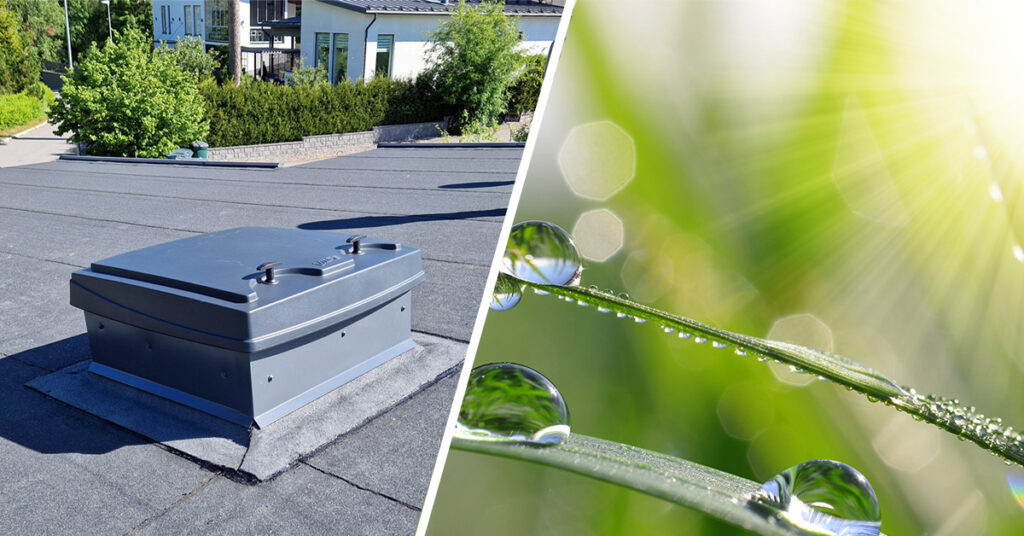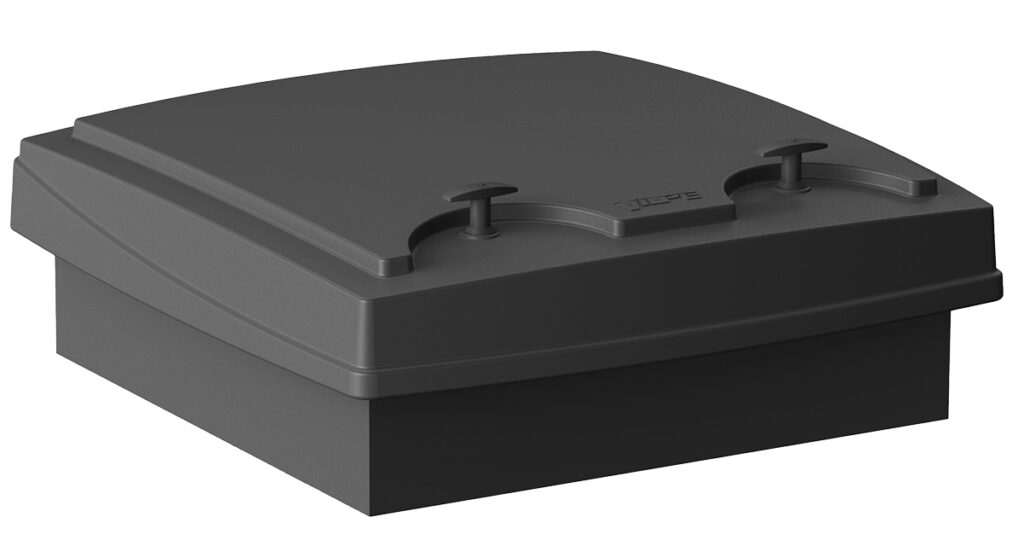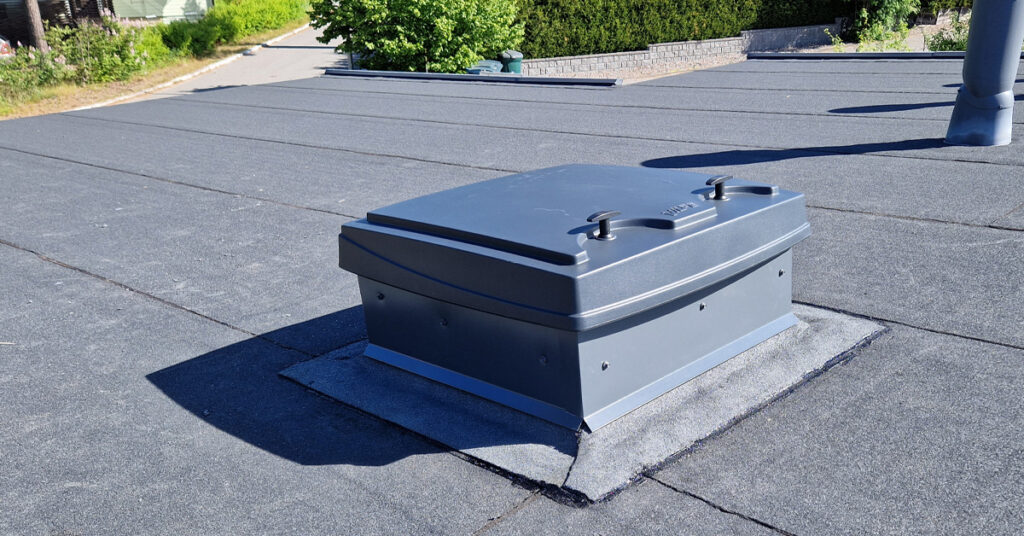Materials Matter: VILPE’s Roof Hatch Generates up to 92% Lower Total Emissions per Product Compared to a Metal Alternative

The production of VILPE’s Multiroof roof hatch results in 79% fewer fossil greenhouse gas emissions than a comparable metal-made product. The difference in total greenhouse gas emissions (GWP-total) is even greater—up to 92% less. This significant difference is primarily due to the lighter structure, partially bio-based materials, and low-emission electricity production. The results highlight that thoughtful material choices and product design can significantly reduce emissions and support the construction industry in achieving its climate goals.
The climate impact of construction is receiving increasing attention, and EU-level regulations on Environmental Product Declarations (EPDs) are becoming stricter. At the same time, designers and builders are showing growing interest in reducing carbon footprint. While major structural elements like building framework and insulation are often the focus, even single building element’s materials can significantly influence overall emissions.
This comparison examined the lifecycle climate impacts of two roof hatches using publicly available, third-party verified EPDs from the EPD Hub database. The EPDs used here were prepared in accordance with EPD Hub PCR version 1.1. The newer PCR 1.2 version would require even more detailed reporting on end-of-life material processing (EOL).
The comparison focused on a VILPE Multiroof hatch—mainly composed of polyethylene and laminated timber—and a typical metal alternative. The analysis concentrated on greenhouse gas emissions from the manufacturing phase (A1–A3) and used 600 × 600 mm sized models available for both products.

Climate Impact Comparison
The core of the comparison was the A1–A3 module emissions, covering raw material acquisition, transportation, and manufacturing. For VILPE’s Multiroof hatch, fossil CO₂ emissions were 2.35 kg CO₂e per kg of product, while the metal alternative had 3.41 kg CO₂e/kg, approximately 45% higher.
The EPDs of both products specify 600 × 600 mm models, so the comparison used a consistent product size. VILPE’s Multiroof hatch weighs about 18 kg, and the metal one 60 kg. Therefore, the total manufacturing phase emissions (GWP-fossil) were about 42 kg CO₂e for VILPE and 205 kg CO₂e for the metal version. This means VILPE’s hatch produces around 79% less fossil emissions during manufacturing.
The difference in total greenhouse gas emissions (GWP-total) is even greater. VILPE’s total emissions are 0.903 kg CO₂e/kg, compared to 3.55 kg CO₂e/kg for the metal alternative.
Total emissions:
- VILPE: ~16.3 kg CO₂e
- Metal product: ~213 kg CO₂e
VILPE Multiroof roof hatch’s GWP-total is lower than its fossil emissions GWP (0.903 vs. 2.35 kg CO₂e/kg) because the product’s bio-based materials contribute to carbon sequestration. This biogenic carbon sequestration is seen as a negative value in the GWP-biogenic line of the EPD document and reduces the product’s overall emissions. Therefore, VILPE’s total emissions are approximately 92% lower than the metal alternative.
Product | Weight (kg) | GWP-fossil A1–A3 (kg CO₂e/kg) | Total GWP-fossiili (kg CO₂e/product) | GWP-total (kg CO₂e/kg) | GWP-total (kg CO₂e/product) |
| VILPE Multiroof | 18 | 2,35 | 42 | 0,903 | 16,3 |
| Metal alternative | 60 | 3,41 | 205 | 3,55 | 213 |
Materials Make the Difference
The differences are primarily due to the material composition. VILPE Multiroof is mostly made of polyethylene (48%) and laminated timber (29%), while the metal alternative is mostly made of steel (74%). Additionally, the metal roof hatch contains mineral wool (25%).
The structure affects the environmental load in two key ways:

- Lighter structure means less raw material is required, which results in less mining, refining, and transport.
- Material processibility and manufacturing temperatures differ significantly. Usually, plastic and wood components require less energy than energy-intensive steel, which emits more fossil-based CO₂ during production.
VILPE also utilizes renewable electricity in production (90% nuclear, 10% solar), whereas the metal roof hatch’s EPD does not specify energy-related emissions.
| Material Category | VILPE Multiroof (%) | Metal competitor (%) |
| Fossil plastics | 48 | 1 |
| Bio-based materials | 29 | – |
| Metals | 23 | 74 |
| Mineral wool | – | 25 |
Conclusions
This comparison clearly demonstrates that material selection and energy use during production significantly influence the carbon footprint of building elements. These differences are especially important in large-scale projects where products are used repeatedly. In these situations, lower unit emissions accumulate, supporting better emission control across the entire construction project. Product-specific, third-party verified EPD data enables transparent, data-driven decision-making and equips designers with the tools to contribute to climate goals early in the planning phase.
